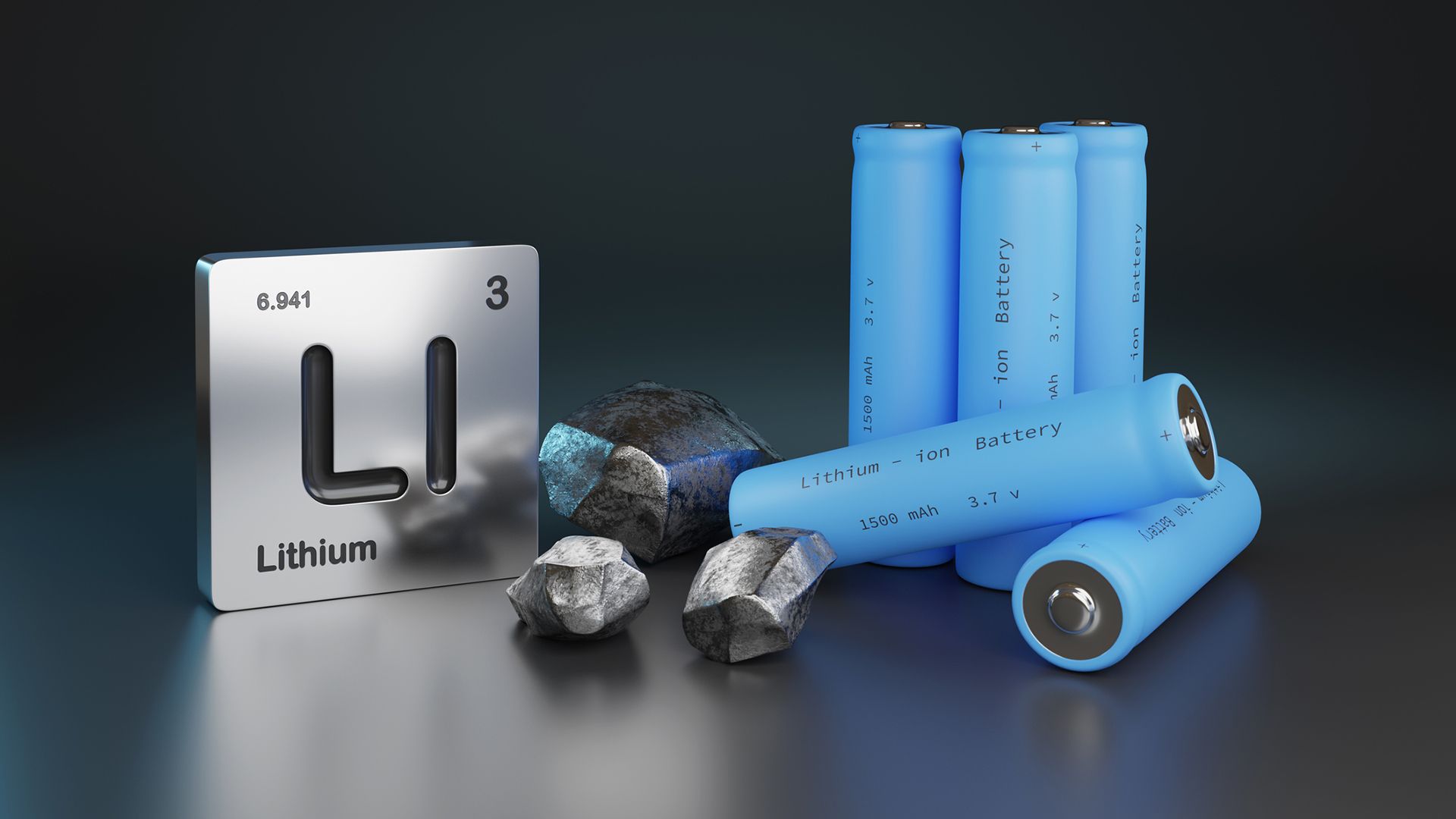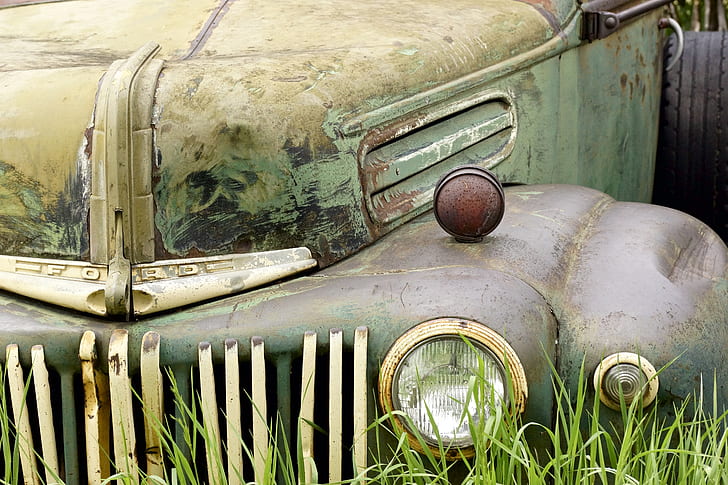
The dream of unearthing a forgotten classic, painstakingly restoring it to its former glory, and perhaps even turning a tidy profit, is a common fantasy among automotive enthusiasts. It’s a vision fueled by countless success stories, of barn finds transformed into concours champions, and rare models appreciating exponentially in value. Yet, for every triumphant tale, there are countless others where passion turns to purgatory, where the romantic ideal of restoration crashes head-on with the harsh realities of rusted frames, elusive parts, and spiraling costs. The overwhelming odds are that a project car will end up costing more than its eventual worth, transforming a potential asset into a financial drain.
This is a truth that seasoned mechanics and experts understand all too well. While personal attachment can certainly justify any investment in a beloved vehicle, for those approaching restoration with an eye on practicality, investment, or even just a manageable project, careful consideration is paramount. It’s crucial to assess not just the car’s initial purchase price, but the entire ecosystem of parts availability, market demand, and the sheer technical complexity involved. When the goal is to create something truly exceptional without trading your soul in the process, choosing the right candidate is half the battle.
In this in-depth exploration, we delve into the often-overlooked side of classic car ownership: the vehicles that, despite their allure or historical context, are simply not worth the Herculean effort and financial outlay required for restoration. Drawing on expert insights and market realities, we present a curated list of cars that, for various compelling reasons, tend to bring more headaches than horsepower. This isn’t to diminish their place in automotive history, but rather to provide a pragmatic guide for enthusiasts looking to avoid turning their dream project into an unfinishable nightmare.

1. **Pontiac Trans Am SD-455**The 1973 Pontiac Firebird Trans Am, especially the fabled SD-455 model, stands as a testament to the raw, unbridled power of the muscle car era, a truly outstanding vehicle that only grows more impressive with time. For many gearheads, experiencing the drive of such a machine is a definitive automotive rite of passage. However, securing one of the mere 252 Super Duty units ever produced would be a major victory in itself, underscoring its profound rarity. This scarcity, while making it desirable, simultaneously elevates it to a level of restoration difficulty that few projects can rival.
The real challenge with an SD-455 doesn’t just lie in locating one, but in the intricate and often frustrating restoration process. Many of its mechanical and electrical components are now either critically outdated or exist in such extraordinarily limited supply that simply identifying and sourcing them can demand months of meticulous planning even before a wrench is turned. The specific requirements for the SD-455 engine, known for its robust cylinder block and four-bolt main bearings, mean that ensuring it is in excellent condition is absolutely critical, as any engine work requires specialized expertise. As the context states, “If you haven’t guessed it by now, none of this will be inexpensive.”
The specialized knowledge, bespoke fabrication often required for unavailable parts, and the sheer time commitment translate directly into a financial burden that can easily outstrip the car’s already significant market value. While its presence in a film like “McQ” with John Wayne adds to its iconic status, making it a stylish swan song to the golden age of muscle cars, its restoration is a pursuit best left to those with truly unlimited resources and an unparalleled dedication to the marque.
Car Model Information: 2024 Honda Civic LX
Name: Pontiac Firebird
Caption: The second, third, and fourth generations of,the Pontiac Firebird Trans Am
Manufacturer: Pontiac (automobile)
Production: February 23, 1967 – August 30, 2002
ModelYears: 1967 – 2002
Class: Pony car,Muscle car
Platform: GM F platform
Related: Chevrolet Camaro
Layout: Front engine, rear-wheel-drive layout
Categories: 1970s cars, 1980s cars, 1990s cars, 2000s cars, All articles with dead external links
Summary: The Pontiac Firebird is an American automobile built and produced by Pontiac from the 1967 to 2002 model years. Designed as a pony car to compete with the Ford Mustang, it was introduced on February 23, 1967, five months after GM’s Chevrolet division’s platform-sharing Camaro. This also coincided with the release of the 1967 Mercury Cougar, Ford’s upscale, platform-sharing version of the Mustang.
The name “Firebird” was also previously used by GM for the General Motors Firebird series of concept cars in the 1950s.
Get more information about: Pontiac Firebird
Buying a high-performing used car >>>
Brand: Pontiac Model: Trans Am
Price: $21,650 Mileage: 17,979 mi.
Read more about: Roaring Legends: A Deep Dive into 15 Peak-Performance 1970s Muscle Cars for the Enthusiast
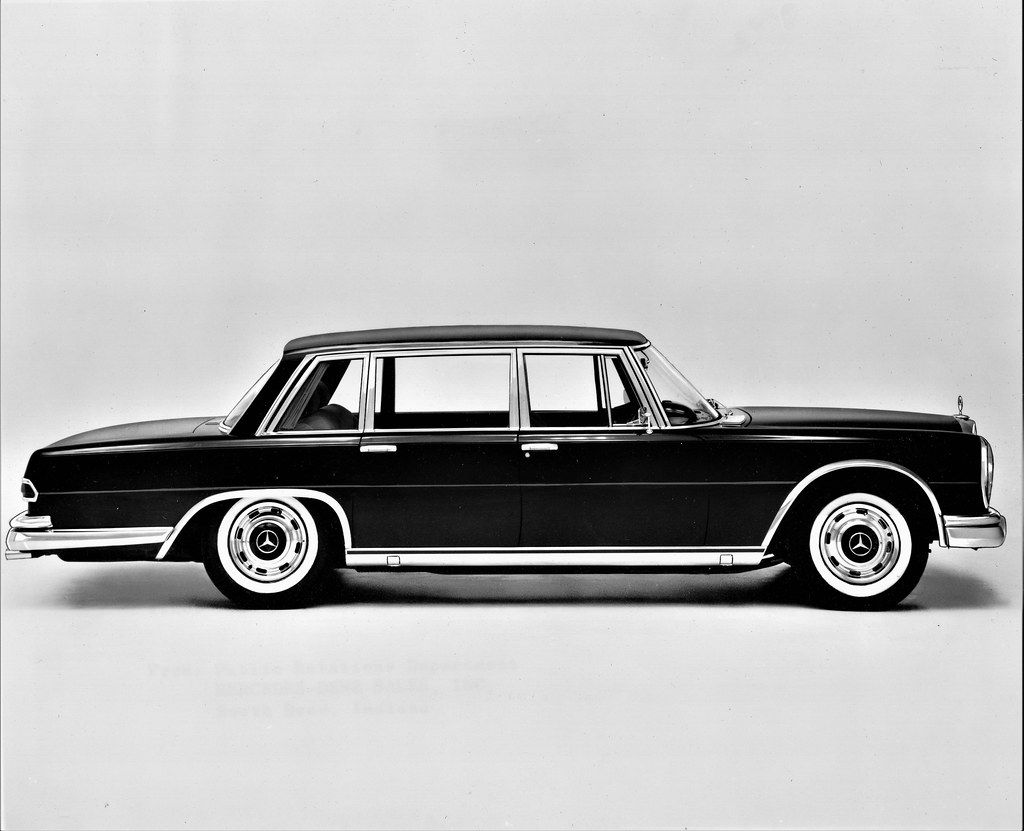
2. **Mercedes-Benz 600**The Mercedes-Benz 600, particularly the Pullman variant, conjures images of unbridled luxury and exclusivity, a vehicle originally designed for royalty, heads of state, and the global elite. To even contemplate the price of a 1972 Mercedes 600 Pullman is to prepare for a severe reality check, unless one’s bank account boasts a few extra zeroes. Acquiring the car itself is already a financially demanding proposition, but restoring one that has “seen better days” escalates the challenge to an even more daunting, almost legendary, level.
The sheer complexity of the Mercedes-Benz 600’s engineering, with its sophisticated hydraulic system powering everything from windows to seats and the trunk lid, means that any restoration extends far beyond typical mechanical fixes. These systems, cutting-edge for their time, are now incredibly difficult and expensive to repair or replace, often requiring specialists with highly niche skills. Many of these components are bespoke to the 600, reflecting its original stratospheric cost and meticulous construction.
Jeremy Clarkson’s palpable excitement during the ‘Grosser vs. Corniche: Old Car Challenge’ episode vividly illustrates the allure and grandeur of this iconic car. However, that allure masks the immense practical and financial hurdles. Should one possess both the vast financial means and the extraordinary patience required, joining the exclusive ranks of owners including Queen Elizabeth II and Jack Nicholson might be achievable. For anyone else, the 600 Pullman remains a magnificent, but financially ruinous, dream.
Read more about: Ralph Lauren’s Billion-Dollar Garage: A Master Curator’s Collection of Priceless Automotive Art on Wheels
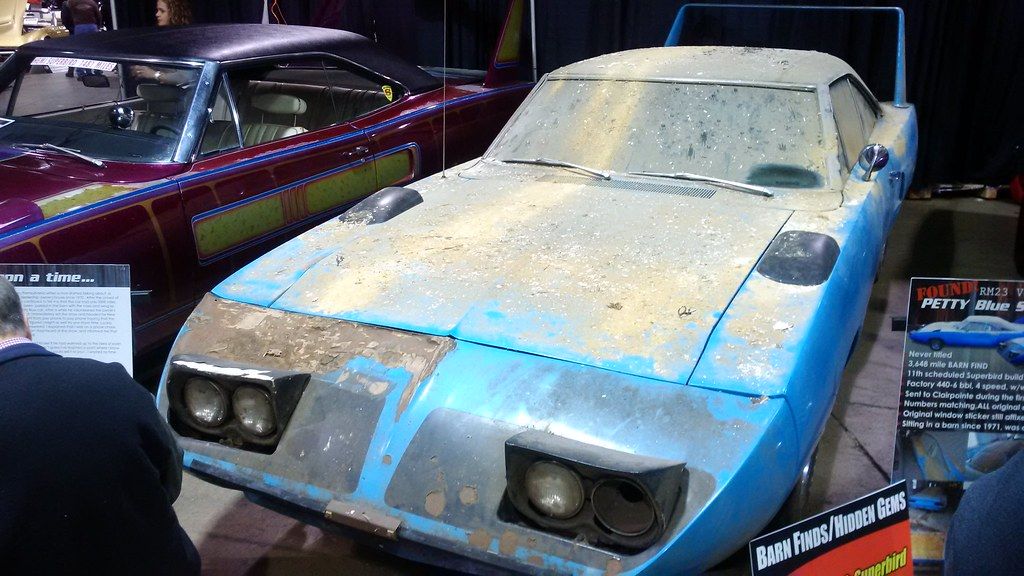
3. **Plymouth Superbird**The 1970 Plymouth Superbird is an instantly recognizable icon, a truly distinctive shape in American muscle car history, chiefly defined by its towering rear wing and aerodynamic nose cone. Its value is steadily rising, a testament to its legend, yet its rarity is equally profound, with only 2,000 units ever produced. Tracking one down is a significant challenge in itself, and for those fortunate enough to locate an example, the journey has only just begun. The cost of restoring a Superbird could easily spiral into the hundreds of thousands of dollars, a figure highly dependent on its initial condition.
The Superbird wasn’t just a striking road car; it was a purpose-built NASCAR homologation special, a radically reworked edition of the standard Plymouth Road Runner. This racing pedigree means it was engineered for high performance, but also with highly specialized components that are exceedingly difficult to source today. The distinctive aerodynamic nose cone and towering rear wing are integral to its unique performance, making their repair or reproduction incredibly complex and expensive if damaged. The context notes, “after years of use or storage, you’re likely to encounter mechanical issues that will need attention, adding even more to the restoration effort.”
The car’s brief, impactful run, helping to bring legendary NASCAR driver Richard Petty back to Plymouth and prompting NASCAR rule changes, cements its historical significance. Yet, this very uniqueness, combined with its limited production and specialized design, makes it an extraordinarily difficult and expensive project. For the average enthusiast, the Superbird remains a magnificent, high-flying dream, a vehicle whose restoration costs soar far beyond the realm of sensible investment.
Read more about: 14 Untamed 1970 Muscle Cars That Still Roar and Resonate Today: A MotorTrend Deep Dive
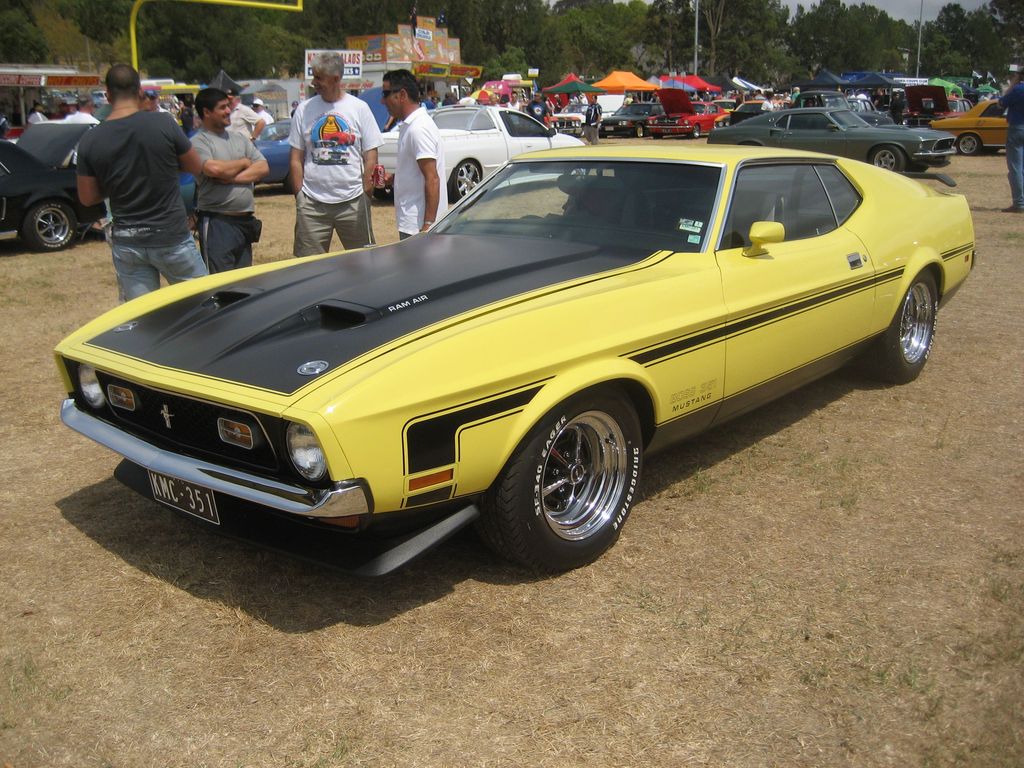
4. **Ford Mustang Boss 351**The 1971 Ford Mustang Boss 351 holds a legendary status, marking the end of an era as the final iteration of the first-generation Mustang, the last true muscle car from Ford’s golden age, and the ultimate racing-spec Mustang of its time. With only 1,806 units ever produced, this car is becoming increasingly rare, a scarcity that naturally drives up its value and simultaneously complicates any restoration endeavor. Current market prices for an original range from $50,000 to $100,000, depending heavily on its condition.
Mustangs from this era are not particularly renowned for their inherent reliability, which means that any Boss 351 acquired today will almost certainly require significant restoration work. This isn’t merely cosmetic; expect substantial mechanical and structural issues to address. The car’s distinct powertrain and specialized equipment, engineered for both drag racing and road course challenges, mean that parts are not only difficult to find but also command premium prices, far beyond those for more common Mustang variants. The scarcity, with estimates suggesting only about 630 remain today, exacerbates this.
The unfortunate reality is that the initial purchase cost of a Boss 351 is likely to be matched, or even exceeded, by the expense of bringing one of these rare machines back to its prime. Its single-year production run in 1971, just before the fuel crisis reshaped the Mustang lineup, makes it a true collector’s item, but also a formidable financial commitment for restoration. For all its historical milestones and undeniable swagger, the Boss 351 stands as a powerful reminder that rarity and performance often come hand-in-hand with prohibitive restoration challenges and costs.
Car Model Information: 2024 Honda Civic LX
Name: Mustang (first generation)
Caption: 1965 Ford Mustang
Aka: Ford T5 (Germany)
Manufacturer: Ford Motor Company
Assembly: Unbulleted list
Production: March 1964 – June 1973
ModelYears: 1965–1973
Class: Unbulleted list
BodyStyle: Unbulleted list
Layout: Front-engine, rear-wheel drive layout
Designer: Gale Halderman
Related: Unbulleted list
Successor: Ford Mustang (second generation)
Categories: 1970s cars, All Wikipedia articles written in American English, All articles with unsourced statements, Articles with short description, Articles with unsourced statements from January 2020
Summary: The first-generation Ford Mustang was manufactured by Ford from March 1964 until 1973. The introduction of the Mustang created a new class of automobiles known as pony cars. The Mustang’s styling, with its long hood and short deck, proved wildly popular and inspired a host of competition.
It was introduced on April 17, 1964, as a hardtop and convertible, with the fastback version following in August 1964. Upon introduction, the Mustang, sharing its platform with the Falcon, was slotted into the compact car segment.
The first-generation Mustangs grew in overall dimensions and engine power with each revision. The 1971 model featured a drastic redesign. After an initial surge, sales steadily declined, and Ford began working on a new generation Mustang. With the onset of the 1973 oil crisis, Ford was prepared, having already designed the smaller Mustang II for the 1974 model year. This new car shared no components with preceding models.
Get more information about: Ford Mustang (first generation)
Buying a high-performing used car >>>
Brand: Ford Model: Mustang Boss 351
Price: $21,650 Mileage: 17,979 mi.
Read more about: 14 Untamed 1970 Muscle Cars That Still Roar and Resonate Today: A MotorTrend Deep Dive
5. **Chevrolet Corvette Stingray (C2)**The early Corvettes possess an undeniable swagger and attitude that, for many purists, modern versions simply cannot match. The Chevrolet Corvette Stingray (C2), with its iconic design and potent performance, represents a pinnacle of American automotive styling. However, finding the C2 of your dreams is merely the first hurdle; the task becomes significantly more daunting when one truly grasps the immense effort and financial commitment inherent in its restoration, particularly for the most coveted models.
A primary challenge with the C2 lies in its specific design, notably its unique chassis and shortened wheelbase. The context explicitly states, “The primary challenge lies in the car’s design specifically, its chassis and shortened wheelbase, which make sourcing the right parts a difficult endeavor.” These characteristics, while contributing to its legendary handling and appearance, mean that replacement parts are scarce, highly sought after, and consequently, prohibitively expensive when they can be found. Unlike many contemporary vehicles that shared components, the C2 often utilized bespoke parts.
If an enthusiast is fortunate enough to track down a particularly prized 1963 model, complete with its highly sought-after rear split window, the financial implications are even more severe. For such an iconic and rare variant, one must be prepared for the restoration process alone to potentially cost more than the initial purchase price of the car itself. The C2 Corvette is a stark example of how desirability and historical significance can translate directly into a restoration project that offers more headaches than horsepower.
Car Model Information: 2024 Honda Civic LX
Name: Chevrolet Corvette (C2)
Caption: 1963 Chevrolet Corvette Sport Coupe
Manufacturer: Chevrolet
Aka: Chevrolet Corvette Sting Ray
Production: August 1962–July 1967
ModelYears: 1963–1967
Platform: Series 0800 (1962-1964),Series 194 (1965-1967)
Chassis: Body-on-frame
Assembly: St. Louis, Missouri
Predecessor: Chevrolet Corvette (C1)
Successor: Chevrolet Corvette (C3)
Class: Sports car
BodyStyle: Convertible (car),coupé
Layout: Front-engine, rear-wheel-drive layout
Engine: {{cvt,327,cuin,L,1,Chevrolet small-block engine#327,V8 engine
Wheelbase: cvt
Length: cvt
Width: cvt
Height: cvt
Weight: cvt
Transmission: manual transmission,manual transmission,Powerglide
Related: Bill Thomas Cheetah
Designer: Larry Shinoda
Categories: 1960s cars, All articles needing additional references, All articles with specifically marked weasel-worded phrases, All articles with unsourced statements, Articles needing additional references from July 2024
Summary: The Chevrolet Corvette (C2) is the second-generation Corvette sports car, produced by the Chevrolet division of General Motors (GM) for the 1963 through 1967 model years.
Get more information about: Chevrolet Corvette (C2)
Buying a high-performing used car >>>
Brand: Chevrolet Model: Corvette Stingray (C2)
Price: $21,650 Mileage: 17,979 mi.
Read more about: Cruising Through Time: The 12 Dream Machines of the 1960s and 1970s That Defined Automotive Greatness
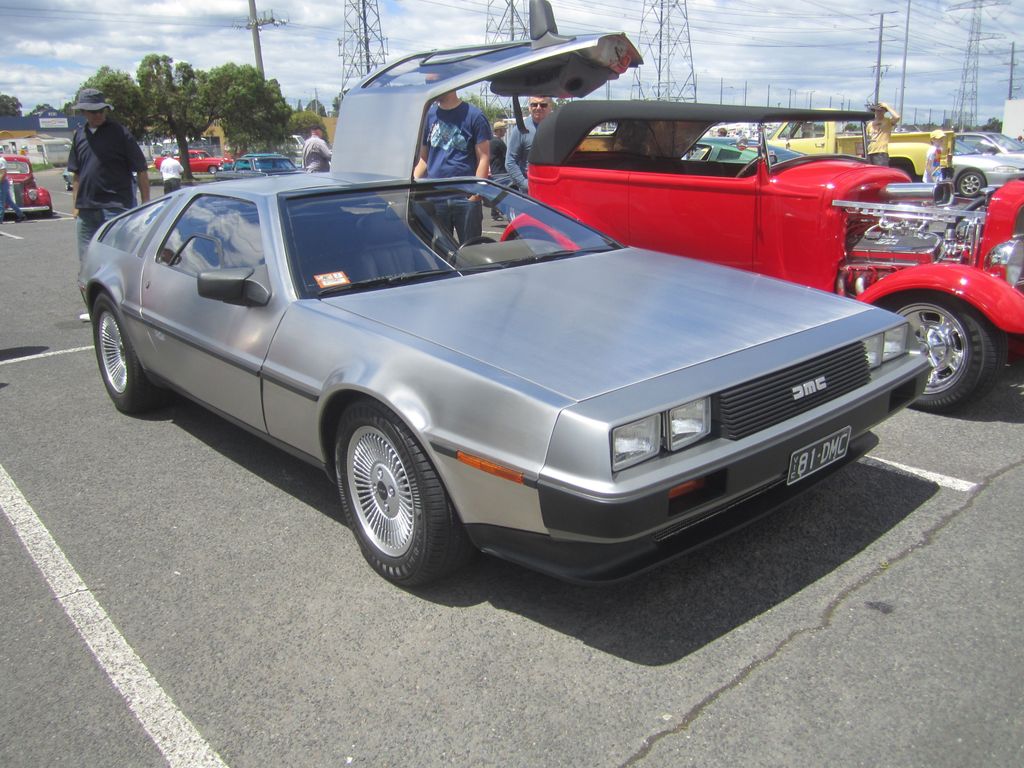
6. **DeLorean DMC-12**The DeLorean DMC-12 holds an iconic place in popular culture, largely thanks to its starring role in the “Back to the Future” film series. Its distinctive gull-wing doors and brushed stainless steel body evoke a futuristic, almost mythical, allure. However, the reality of DeLorean ownership and restoration is often far less cinematic, presenting a unique set of challenges that make it a questionable restoration candidate for most. Collectors may love the unmistakable look, but they frequently regret the actual ownership experience.
One of the car’s most significant drawbacks is its “underpowered engine.” Equipped with a 2.85-liter V6 PRV (Peugeot-Renault-Volvo) engine, the DMC-12 delivered “mediocre performance” even by 1980s standards, struggling to live up to its exotic appearance. Beyond the performance issues, the unique stainless steel body, while visually striking, requires specialized maintenance. It cannot be painted conventionally, and repairs to the panels are complex, demanding specific techniques and tools to maintain its factory finish, which adds considerable cost and expertise to any bodywork restoration.
Compounding these issues is the car’s “spotty build quality.” Early models, in particular, were plagued with various manufacturing inconsistencies and reliability issues. While a dedicated network of specialists has emerged over the years, the inherent design choices and original production shortcuts mean that bringing a worn DMC-12 up to a reliable, show-quality standard is a costly and often frustrating process. It is, therefore, more suited as a “display piece than a daily driver,” or a straightforward restoration project, despite its undeniable cultural significance.
Car Model Information: 1982 Delorean DMC-12
Name: DMC DeLorean
Alt: 1983 DeLorean
Caption: 1983 DeLorean
Manufacturer: DeLorean Motor Company
Production: January 21, 1981 – December 1982
ModelYears: 1981–1983
Assembly: Dunmurry
Designer: Giorgetto Giugiaro
Class: Sports car
BodyStyle: coupé
Layout: Rear-engine, rear-wheel-drive layout
Doors: Gull-wing doors
Engine: 2.85 L
Abbr: on
Powerout: 130 hp
Transmission: 5-speed manual ,3-speed automatic
Wheelbase: 2413 mm
Length: 4267 mm
Width: 1988 mm
Height: 1140 mm
Weight: 1233 kg
Sp: us
Categories: 1980s cars, All Wikipedia articles written in American English, Articles with short description, Automobiles with backbone chassis, Automobiles with gull-wing doors
Summary: The DMC DeLorean is a rear-engine, two-seat sports car manufactured and marketed by John DeLorean’s DeLorean Motor Company (DMC) for the American market from 1981 until 1983—ultimately the only car brought to market by the fledgling company. The DeLorean is sometimes referred to by its internal DMC pre-production designation, DMC-12, although this was not used in sales or marketing materials for the production model.
Designed by Giorgetto Giugiaro, the DeLorean is noted for its gull-wing doors and brushed stainless-steel outer body panels, as well as its lack of power and performance. Though its production was short-lived, the DeLorean became widely known after it was featured as the time machine in the Back to the Future films.
With the first production car completed on January 21, 1981, the design incorporated numerous minor revisions to the hood, wheels and interior before production ended in late December 1982, shortly after DMC filed for bankruptcy and after total production reached an estimated 9,000 units.
Despite the car having a reputation for poor build quality and an unsatisfactory driving experience, the DeLorean continues to have a strong following, driven in part by the popularity of Back to the Future. 6,500 DeLoreans were estimated to still be on the road as of 2015.
Get more information about: DMC DeLorean
Buying a high-performing used car >>>
Brand: DeLorean Model: DMC-12
Price: $129,950 Mileage: 3,145 mi.
Read more about: Beyond the Encore: 14 One-Hit Wonder Cars That Burned Brightly, Then Vanished Without a Successor
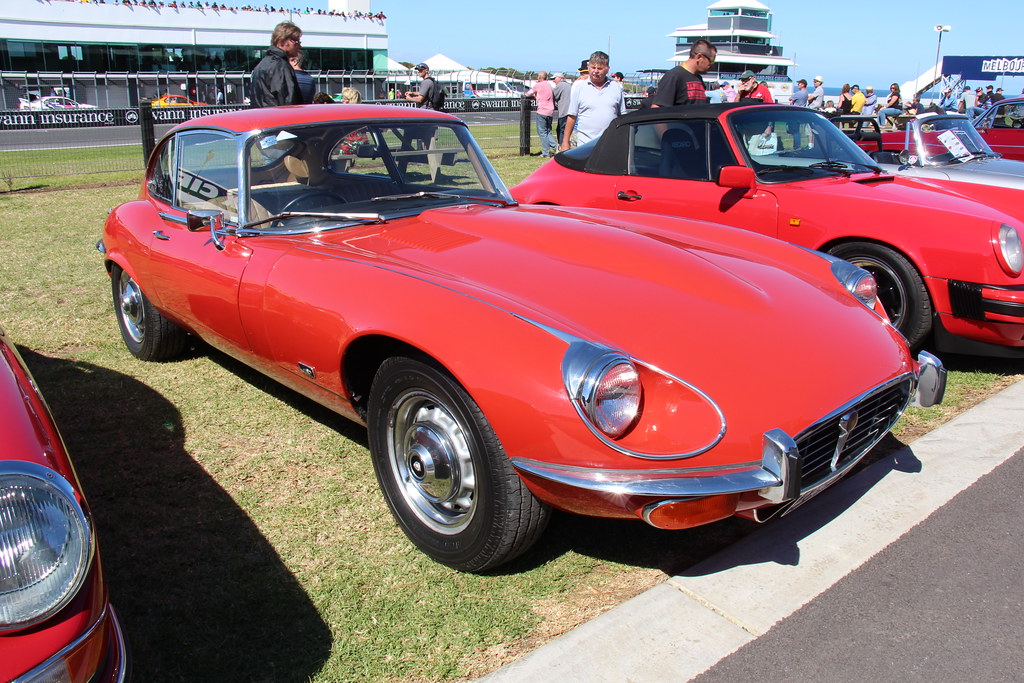
7. **Jaguar E-Type Series III**The Jaguar E-Type is universally regarded as one of the most beautiful cars ever made, a true British classic whose stunning lines captivate enthusiasts worldwide. However, specifically the Series III V12 models, while boasting a powerful engine, come with a formidable reputation for unreliability. This particular iteration of the E-Type, produced from 1971 to 1974, frequently earns the moniker of being “better admired at a distance than owned” when it comes to restoration considerations.
The primary culprit for its problematic reputation is the V12 engine itself. While impressive in concept, it is an “absolute nightmare to maintain,” renowned for its complexity, heat management issues, and propensity for oil leaks. Diagnosing and repairing problems within this intricate powerplant demands highly specialized knowledge and considerable labor, driving up maintenance and restoration costs exponentially. As the context notes, “parts are really pricey,” adding another significant financial hurdle.
Beyond the engine, other common E-Type issues like rust, electrical gremlins, and aging suspension components still apply. The combination of an inherently unreliable and expensive-to-maintain engine with generally higher operational costs means that a Series III E-Type restoration is a project that can quickly become a financial black hole. While its visual appeal is unquestionable, the practical realities make it a less than ideal candidate for those seeking a manageable and rewarding classic car restoration experience.
Car Model Information: 1962 Jaguar E-Type XKE
Sp: uk
Name: Jaguar E-Type
Caption: 1961 E-Type Series 1 3.8-Litre, the first production model of this open two-seater
Aka: Jaguar XK-E , Jaguar V-12
Manufacturer: Jaguar Cars
Production: 1961–1974
Class: Sports car
Predecessor: Jaguar XK150
Related: Jaguar D-Type,Jaguar XJ13
Successor: Jaguar XJS
Layout: FMR layout
Assembly: Coventry,England
Designer: Malcolm Sayer
Categories: 1970s cars, 2+2 coupés, All articles with dead external links, All articles with specifically marked weasel-worded phrases, All articles with unsourced statements
Summary: The Jaguar E-Type, or the Jaguar XK-E for the North American market, is a British front mid-engined sports car that was manufactured by Jaguar Cars Ltd from 1961 to 1974. Its sleek appearance, advanced technologies, high performance, and competitive pricing established it as an icon. The E-Type’s claimed 150 miles per hour (240 km/h) top speed, sub-7-second 0 to 60 mph (97 km/h) acceleration, largely unitary body construction, front and rear independent suspension with disc brakes, mounted inboard at the rear, and rack-and-pinion steering spurred industry-wide changes.
The E-Type was based on Jaguar’s D-Type racing car, which had won the 24 Hours of Le Mans for three consecutive years beginning in 1955.
The E-Type employed what was, for the early 1960s, a novel design principle, with a front subframe carrying the engine, front suspension and front bodywork bolted directly to the body tub. No ladder frame chassis, as was common at the time, was needed and as such the first cars weighed only 1,315 kg (2,899 lb).
It is rumored that, on its debut on 15 March 1961, Enzo Ferrari called it “the most beautiful car ever made”, but this statement is not fully confirmed. In 2004, Sports Car International magazine placed the E-Type at number one on their list of Top Sports Cars of the 1960s. In March 2008, the Jaguar E-Type ranked first in The Daily Telegraph’s online list of the world’s “100 most beautiful cars” of all time.
Get more information about: Jaguar E-Type
Buying a high-performing used car >>>
Brand: Jaguar Model: E-Type
Price: $269,900 Mileage: 76,725 mi.
Read more about: Beyond the Chrome: A MotorTrend Deep Dive into Vintage Cars That Command Millions Today

8. **Chevrolet Corvette C4 (1984–1996)**The Chevrolet Corvette C4, a ubiquitous sight in the automotive landscape of the 1980s and 90s, was once the epitome of accessible American sports car performance. Its sleek, modern lines and aggressive stance undoubtedly turned heads upon its debut, marking a significant evolution for the Corvette marque. However, as the decades have progressed, this particular generation has struggled to maintain its appeal in the discerning world of classic car restoration, frequently falling short of the collector status enjoyed by its more iconic predecessors.
A primary challenge for the C4 lies within its interior and the way it has aged. The cabin, characterized by its “cheap interiors,” utilizes materials and plastics that often feel dated and flimsy by contemporary standards. This perceived lack of quality in the cockpit, especially when compared to the robust and characterful interiors of earlier Corvettes or European rivals, significantly diminishes its desirability for enthusiasts seeking a truly premium classic driving experience.
Furthermore, the C4’s performance, while respectable in its era, now feels distinctly “mediocre by today’s standards.” With the relentless march of automotive technology, modern vehicles routinely offer superior horsepower, handling dynamics, and refinement. This dated performance, combined with its “limited appreciation in value,” means that substantial investment in a C4 restoration is often a financially unrewarding proposition. As the context notes, it is “a classic in name only,” largely remaining off the radar for serious collectors who prioritize future value and enduring appeal.
Car Model Information: 2024 Honda Civic LX
Name: Chevrolet Corvette (C4)
Caption: 1994 Chevrolet Corvette
Manufacturer: Chevrolet
Production: January 3, 1983 – June 20, 1996
ModelYears: 1984–1996
Predecessor: Chevrolet Corvette (C3)
Successor: Chevrolet Corvette (C5)
Class: Sports car
Assembly: Bowling Green, Kentucky
BodyStyle: targa top,Convertible (car)
Layout: Front-engine, rear-wheel-drive layout#FMR
Platform: GM Y platform
Wheelbase: cvt
Length: cvt
Width: cvt
Height: Coupe: {{cvt,46.7,in,mm
Transmission: automatic transmission,Overdrive (mechanics),GM 4L60-E transmission,ZF Friedrichshafen
Engine: {{cvt,350,cuin,L,1,Chevrolet small-block engine (first- and second-generation)#L83
Weight: cvt
Designer: Jerry Palmer
Related: Callaway Cars#C4 (RPO B2K Callaway Twin Turbo Corvette),Callaway Cars#C4 (RPO B2K Callaway Twin Turbo Corvette),Callaway Cars#C4 (RPO B2K Callaway Twin Turbo Corvette),Callaway Cars#C6 (Callaway SuperNatural Corvette),Callaway Cars#C4 (RPO B2K Callaway Twin Turbo Corvette)
Categories: 1990s cars, All articles with dead external links, All articles with unsourced statements, Articles with dead external links from November 2016, Articles with permanently dead external links
Summary: The Chevrolet Corvette (C4) is the fourth generation of the Corvette sports car, produced by American automobile manufacturer Chevrolet from 1983 until 1996. The convertible returned, as did higher performance engines, exemplified by the 375 hp (280 kW) LT5 found in the ZR1. In early March 1990, the ZR1 would set new records for the highest average speed over 24 hours at over 175 mph (282 km/h) and highest average speed over 5,000 miles at over 173 mph (278 km/h). With a completely new chassis, modern sleeker styling, and other improvements to the model, prices rose and sales declined. The last C4 was produced on June 20, 1996.
Get more information about: Chevrolet Corvette (C4)
Buying a high-performing used car >>>
Brand: Chevrolet Model: Corvette C4
Price: $21,650 Mileage: 17,979 mi.

9. **Ford Mustang II (1974–1978)**The Ford Mustang II occupies a contentious and often criticized chapter within the storied history of the Mustang nameplate. Born from the tumultuous 1970s fuel crisis and the need for greater economy, this generation represented a stark departure from the raw muscle car identity that defined its predecessors. While initially selling well due to its smaller size and efficiency, its legacy among dedicated enthusiasts and collectors is overwhelmingly negative, frequently cited as one of the least desirable iterations of the iconic pony car.
Many automotive commentators widely regard it as the “worst Mustang ever,” a sentiment rooted deeply in its numerous design compromises. The imperative for fuel economy led to the installation of “weak engines” that simply couldn’t deliver the spirited performance expected from a Mustang, even considering the limitations of the era. These underpowered four-cylinders or modest V6s often left drivers feeling profoundly underwhelmed, severely eroding the brand’s performance heritage and making any restoration for performance gains a significant uphill battle.
Beyond its anemic powertrains, the Mustang II’s “awkward styling” further contributes to its lack of collector interest. Its design, heavily influenced by the temporary aesthetic trends of the 1970s, has not aged gracefully, often appearing disproportionate and lacking the aggressive, timeless lines of other Mustang generations. This combination of compromised performance and uninspired aesthetics leads to “collectors often pass it by.” Consequently, any significant investment in a Mustang II restoration is unlikely to garner substantial market demand or appreciation, making it a challenging and often unrewarding project.
Car Model Information: 2024 Honda Civic LX
Name: Second generation
Caption: Ford Mustang II coupe
Aka: Ford Mustang II , Ford T5 (in Germany)
Class: Pony car,Subcompact car
Production: 1973–1978
ModelYears: 1974–1978
Predecessor: Ford Mustang (first generation)
Successor: Ford Mustang (third generation)
Assembly: Unbulleted list
Layout: Front-engine, rear-wheel-drive layout
BodyStyle: coupé,hatchback
Related: Ford Pinto,Ford Pinto
Manufacturer: Ford Motor Company
Engine: ubl
Transmission: ubl
Wheelbase: cvt
Length: cvt
Width: cvt
Height: cvt
Categories: All articles with dead external links, All articles with unsourced statements, Articles with dead external links from April 2024, Articles with permanently dead external links, Articles with short description
Get more information about: Ford Mustang (second generation)
Buying a high-performing used car >>>
Brand: Ford Model: Mustang II
Price: $21,650 Mileage: 17,979 mi.
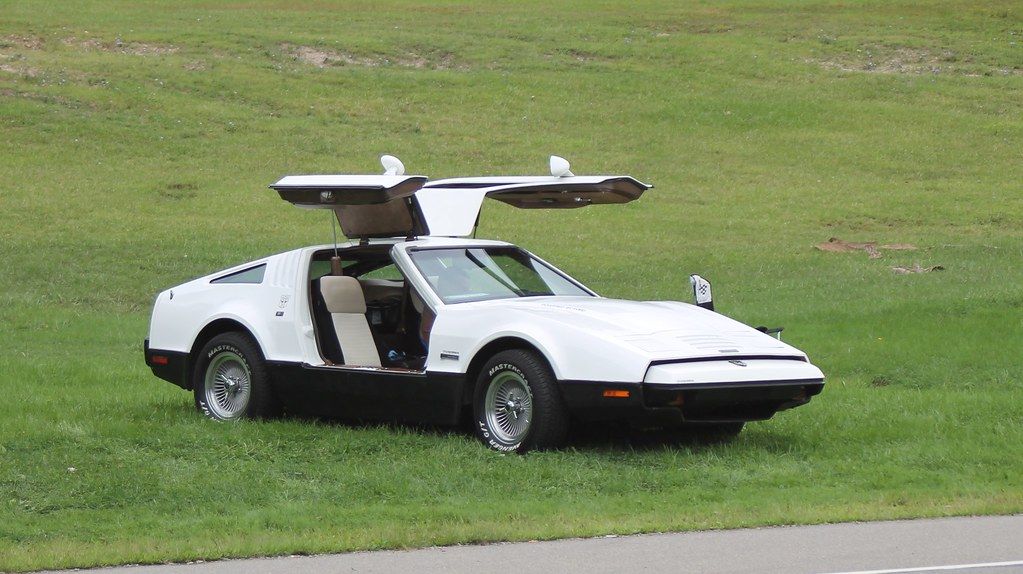
10. **Bricklin SV-1**The Bricklin SV-1 stands as a compelling, yet ultimately ill-fated, chapter in the pursuit of the ultimate safety-focused sports car. Envisioned by Malcolm Bricklin as a futuristic, high-performance vehicle with a strong emphasis on occupant protection, the SV-1 was immediately identifiable by its striking gull-wing doors and bold, wedge-shaped silhouette. It represented an ambitious attempt to blend exotic design with stringent American safety standards, an ideal that regrettably collided with the harsh realities of mass production and quality control.
Despite its innovative appearance and the noble intent behind “Safety Vehicle One,” the SV-1 was unfortunately “plagued by quality issues” right from its inception. The heavy, hydraulically operated gull-wing doors were notorious for their sluggish operation and frequent malfunctions, often failing to open or close reliably. Furthermore, the car’s acrylic body panels, while designed for impact resistance, proved difficult to repair and exhibited tendencies to crack or warp under varying temperatures, adding considerable complexity and cost to any bodywork restoration.
The car’s “limited production” of roughly 3,000 units before the company’s collapse, while typically enhancing rarity, for the SV-1 primarily means an extreme scarcity of replacement parts and a very small network of specialists. As the context highlights, the Bricklin SV-1 ultimately became “more of a cautionary tale than a collector’s dream.” Its inherent flaws and the substantial expense required to rectify them make any restoration effort a deeply speculative and often frustrating endeavor, with little prospect of significant appreciation or widespread collector appeal.
Car Model Information: 1975 Bricklin SV-1
Name: Bricklin SV-1
Manufacturer: Bricklin Canada Ltd.,General Vehicles Inc.
Production: 1974–1975
ModelYears: 1974–1976
Assembly: Saint John, New Brunswick
Designer: Marshall Hobart,Herb Grasse
Class: Sports car
BodyStyle: hatchback
Layout: Front-engine, rear-wheel-drive layout
Engine: ubl ,AMC V8 engine#360
Transmission: ubl
Wheelbase: cvt
Length: cvt
Width: cvt
Height: cvt
Weight: cvt
Sp: us
Doors: Gull-wing doors
Categories: Articles with short description, Automobiles with gull-wing doors, CS1: long volume value, Cars introduced in 1974, Cars of Canada
Summary: The Bricklin SV-1 is a two-seat sports car produced by American businessman Malcolm Bricklin and his manufacturing company from 1974 until late 1975. The car was noteworthy for its gull-wing doors and composite bodywork of color-impregnated acrylic resin bonded to fiberglass. Assembly took place in Saint John, New Brunswick, Canada. The name SV-1 is an abbreviation of “safety vehicle one”. Bricklin company literature uses both the SV-1 and SV1 formats. To promote the car’s safety bona fides, the company touted such features as its integrated roll-over structure and energy-absorbing bumpers.
Get more information about: Bricklin SV-1
Buying a high-performing used car >>>
Brand: Bricklin Model: SV-1
Price: $36,485 Mileage: 34,002 mi.
Read more about: Beyond the Encore: 14 One-Hit Wonder Cars That Burned Brightly, Then Vanished Without a Successor
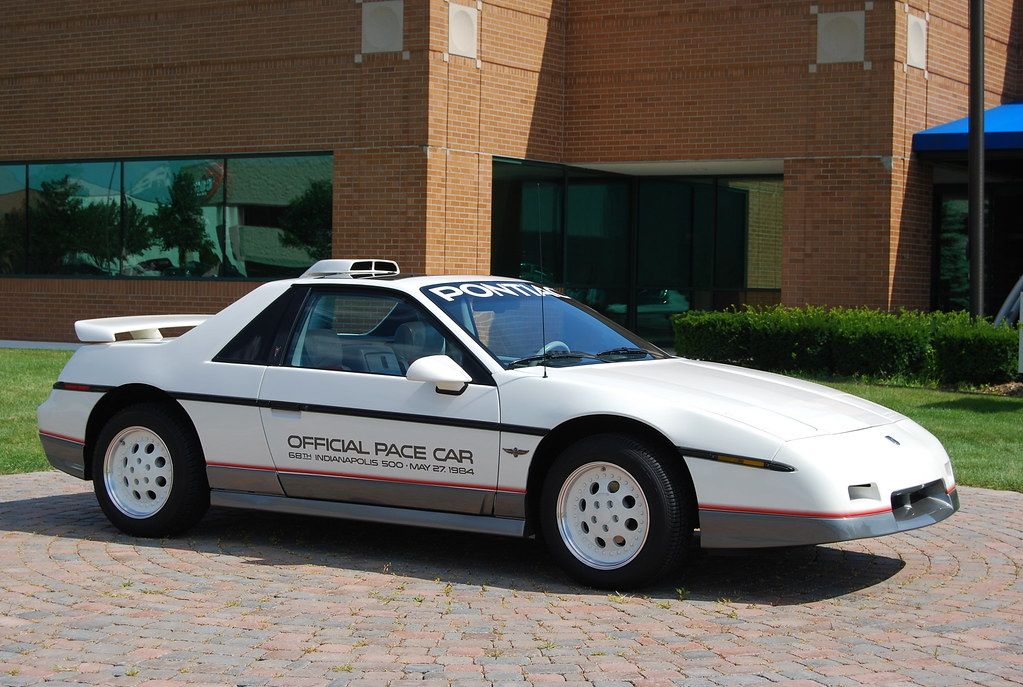
11. **Pontiac Fiero**The Pontiac Fiero emerged in the mid-1980s as a genuinely bold experiment from General Motors: an affordable, mid-engine American sports car accessible to a broader market. Its innovative layout and distinctive styling generated considerable excitement, promising a taste of exotic car dynamics at a fraction of the cost. However, the Fiero’s narrative was quickly overshadowed by a series of well-publicized problems that significantly hampered its potential and tarnished its reputation, positioning it as a problematic classic for most restoration enthusiasts today.
One of the most damaging aspects of the Fiero’s legacy was its alarming “reputation for catching fire.” This serious issue, predominantly affecting early models equipped with the 2.5-liter “Iron Duke” engine due to cooling system and lubrication flaws, escalated into a significant safety concern and a major public relations crisis for Pontiac. While subsequent revisions addressed many of these underlying problems, the initial fire incidents left an indelible mark on the car’s image. This severe reliability issue creates a substantial hurdle for any restorer, due to both the perceived risks and the extensive, often specialized, work needed to ensure long-term safety and dependability.
Beyond the fire hazard, “early models especially were plagued with poor build quality.” This extended to various components, including persistent electrical gremlins, suspension inconsistencies, and general fit-and-finish shortcomings, all contributing to an overall impression of fragility. While undoubtedly a “cool concept,” the context correctly states that the Fiero is “rarely worth the hassle” for a comprehensive restoration. The fundamental challenges of addressing its inherent reliability and build quality flaws mean that achieving a truly dependable and show-quality Fiero often demands a disproportionately high financial and time investment, potentially leading to more frustration than satisfaction.
Car Model Information: 1988 Pontiac Fiero Formula
Name: Pontiac Fiero
Caption: 1988 Fiero Formula
Manufacturer: Pontiac (automobile)
Production: August 1983 – August 16, 1988,370,168 produced
ModelYears: 1984 – 1988
Successor: Pontiac Solstice
Assembly: Pontiac, Michigan
Designer: Hulki Aldikacti,George Milidrag
Class: Sports car
BodyStyle: fastback,notchback
Platform: GM P platform
Layout: Rear mid-engine, rear-wheel-drive layout
Engine: {{cvt,151,CID,L,1,disp=flip,Iron Duke engine#LR8,Inline-four engine
Transmission: Turbo-Hydramatic 125,Manual transmission,Getrag 282 transmission,Isuzu
Wheelbase: 2373 mm
Abbr: on
Length: 4072 mm
Width: 1750 mm
Height: 1191 mm
Weight: 1116 to
Categories: All articles with unsourced statements, Articles with short description, Articles with unsourced statements from February 2012, Articles with unsourced statements from July 2024, Articles with unsourced statements from September 2011
Summary: The Pontiac Fiero is a rear mid-engine, light sports car manufactured and marketed by Pontiac for model years 1984 – 1988. Intended as an economical commuter car with modest performance aspirations, it was Pontiac’s first two-seater since their 1926 to 1938 coupes, and the first mass-produced, rear mid-engine car by any American manufacturer.
In addition to using 4- and 6-cylinder engines to help Pontiac meet America’s ‘CAFE’ average fuel economy requirements, the Fiero’s chassis and structure technology used non-load-bearing, composite body-panels, contributing to the car’s light-weight and its unique selling proposition. Pontiac engineers modified the design over its life to enhance its performance and reposition the two-seater closer to the implications of its sporty configuration.
The Fiero 2M4 (two-seat, mid-engine, four-cylinder) placed on Car and Driver magazine’s Ten Best list for 1984, and was the Official Pace Car of the Indianapolis 500 for 1984.
A total of 370,168 Fieros were manufactured over five years’ production, its mild performance, reliability and safety issues becoming points of criticism. The Fiero was discontinued after annual sales fell steadily.
Get more information about: Pontiac Fiero
Buying a high-performing used car >>>
Brand: Pontiac Model: Fiero
Price: $11,000 Mileage: 101,027 mi.
Read more about: More Than Just a Chassis: Uncovering 12 Catastrophic Design Flaws That Defined Automotive Infamy

12. **Maserati Biturbo**For many automotive enthusiasts, the allure of an Italian luxury-performance car bearing the Maserati trident is irresistible. The Maserati Biturbo series, introduced in the early 1980s, offered a seemingly enticing entry point into this exclusive world: twin-turbocharged power and a plush interior at a relatively more accessible price. Yet, the reality of Biturbo ownership quickly proved to be a sobering lesson in the intricacies and formidable costs associated with maintaining high-performance Italian engineering, particularly regarding its notorious lack of reliability.
The Biturbo’s reputation is unfortunately synonymous with its inherent “fragility” and an almost insatiable requirement for “constant maintenance.” Its complex twin-turbo V6 engine, while delivering impressive power for its displacement, was infamously temperamental, prone to a litany of mechanical issues from frequent turbocharger failures to persistent electrical gremlins and cooling system deficiencies. These issues, coupled with often poorly executed electronics, led to pervasive breakdowns and, as the context starkly observes, “expensive failures” that could rapidly drain an owner’s finances.
The sheer engineering complexity of the Biturbo, combined with the specialized expertise and prohibitively costly parts necessary for repairs, renders its restoration a financial tightrope that few are willing to walk. Today, “even collectors avoid it,” acutely aware of the vast disparity between its original relatively affordable price point and the astronomical sums demanded to maintain it in a reliable state. For those envisioning a classic Italian GT restoration, the Maserati Biturbo serves as a potent reminder that an alluring badge and powerful engine alone do not guarantee a worthwhile project, often leading to far more grief and financial drain than anticipated glory.
Car Model Information: 1985 Maserati Biturbo Base
Name: Maserati Biturbo
Caption: Maserati Biturbo E
Manufacturer: Maserati
Production: 1981–1994
Assembly: Modena,Rho, Lombardy
Related: Maserati Shamal,Maserati Ghibli#Ghibli (AM336),Maserati Barchetta,Maserati Quattroporte#Quattroporte IV,Maserati Karif
Designer: Pierangelo Andreani (1977),Marcello Gandini,Zagato
Class: Grand tourer
BodyStyle: 2+2 (car body style),coupé,sedan (car),Cabriolet (automobile)
Layout: Front-engine, rear-wheel-drive layout
Engine: twin-turbocharged,2.5 L twin-turbocharged 90° V6,2.8 L twin-turbocharged 90° V6
Transmission: ZF Friedrichshafen,Automatic transmission,ZF Friedrichshafen
Wheelbase: {{convert,2,514,mm,in,1,abbr=on
Length: {{convert,4,150,mm,in,1,abbr=on
Abbr: on (228)
Width: {{convert,1,710,mm,in,1,abbr=on
Height: {{convert,1,310,mm,in,1,abbr=on
Successor: Maserati Ghibli#Ghibli (AM336),Maserati Quattroporte#Quattroporte IV
Sp: uk
Categories: 1990s cars, All articles needing additional references, All articles with unsourced statements, Articles needing additional references from November 2019, Articles needing additional references from October 2010
Summary: The Maserati Biturbo is a family of executive grand tourers produced by Italian automobile manufacturer Maserati between 1981 and 1994. The original Biturbo was a two-door, four-seater notchback coupé (of somewhat smaller dimensions than the BMW 3 Series of the time) featuring, as the name implies, a two-litre V6 engine with two turbochargers and a luxurious interior.
The car was designed by Pierangelo Andreani, Chief of Centro Stile Maserati up to 1981, somewhat influenced by the design of the then recent Quattroporte III (penned by Italdesign Giugiaro).
All Maserati models introduced from the Biturbo’s inception in 1981, until 1997, were based on variants of the original Biturbo architecture, including the later grand tourers like the Shamal and Ghibli II, as well as the 1994 fourth generation Quattroporte, which used an evolved and slightly stretched (to 2.65 m / 104.3 in wheelbase) Biturbo Saloon platform.
The Barchetta, while of a different layout entirely, used an ultimate version of the Biturbo V6 engine.
Get more information about: Maserati Biturbo
Buying a high-performing used car >>>
Brand: Maserati Model: Biturbo
Price: $13,899 Mileage: 18,319 mi.
Read more about: Buyer’s Remorse: 15 Cars Drivers Wished They Never Bought

13. **Triumph TR7**The Triumph TR7, boldly advertised as “the shape of things to come” at its 1975 launch, represented British Leyland’s ambitious endeavor to modernize the archetypal British sports car. With its distinctive wedge profile and a contemporary design ethos, it aimed to attract a new generation of buyers. However, the TR7’s tenure was unfortunately plagued by persistent industrial disputes during its production, which, combined with inherent design and engineering deficiencies, solidified its unenviable reputation as a problematic classic that is generally not recommended for extensive restoration.
From a practical ownership and restoration perspective, the TR7 suffered from pervasive quality control shortcomings, leading many to label it a significant “disappointment.” Chief among these were its notorious “electrical gremlins,” which could manifest in a bewildering array of erratic malfunctions, making diagnosis and repair a constant and frustrating battle. Furthermore, widespread “rust issues” were common, particularly in examples originating from early British Leyland factories, meaning many TR7s quickly succumbed to corrosion, demanding extensive and costly bodywork that often far exceeded the car’s modest market value.
Beyond these significant reliability challenges, the TR7’s “underwhelming performance” further detracted from its appeal as a viable restoration candidate. While its styling was certainly distinctive, the four-cylinder engine, typically a 2.0-liter, frequently felt uninspired when compared to its contemporary rivals, lacking the spirited driving dynamics and robust power output expected of a true sports car. This combination of chronic mechanical and structural issues, coupled with its uninspiring performance, has resulted in the TR7 “not earning the nostalgic love other British classics have.” For anyone contemplating a TR7 project, it invariably presents as a “risky purchase,” likely to deliver a disproportionate amount of frustration and expense compared to the rewarding classic car experience they might hope for.
Car Model Information: 1981 Triumph TR7
Sp: uk
Name: Triumph TR7
Caption: 1975 Triumph TR7
Production: unbulleted list
Manufacturer: British Leyland Motor Corporation
Class: Sports car
Layout: FR layout
Predecessor: Triumph TR6
Transmission: unbulleted list
Related: Triumph TR8
Engine: unbulleted list
Abbr: on (coupé)
BodyStyle: unbulleted list
Wheelbase: 85 in
Length: 160 in
Width: 66.2 in
Weight: 1101 kg
Order: flip (coupé)
Height: 50 in
Assembly: unbulleted list
Designer: Harris Mann
Categories: 1980s cars, All articles with unsourced statements, Articles tagged with the inline citation overkill template from January 2024, Articles with short description, Articles with specifically marked weasel-worded phrases from January 2024
Summary: The Triumph TR7 is a sports car that was manufactured in the United Kingdom from September 1974 to October 1981 by British Leyland Motor Corporation (BLMC), which changed its name to British Leyland (BL) in 1975. The car was launched in the United States in January 1975, with its UK home market debut in May 1976. The UK launch was delayed at least twice because of high demand for the vehicle in the US, with final sales of new TR7s continuing into 1982.
It was initially produced at the Speke, Liverpool, factory, moving to Canley, Coventry, in 1978 and then finally to the Rover Solihull plant in 1980.
Get more information about: Triumph TR7
Buying a high-performing used car >>>
Brand: Triumph Model: TR7
Price: $12,500 Mileage: 83,693 mi.
Read more about: Beyond the Showroom: 14 Iconic Classic Cars You Can Restore for Less Than Buying Them
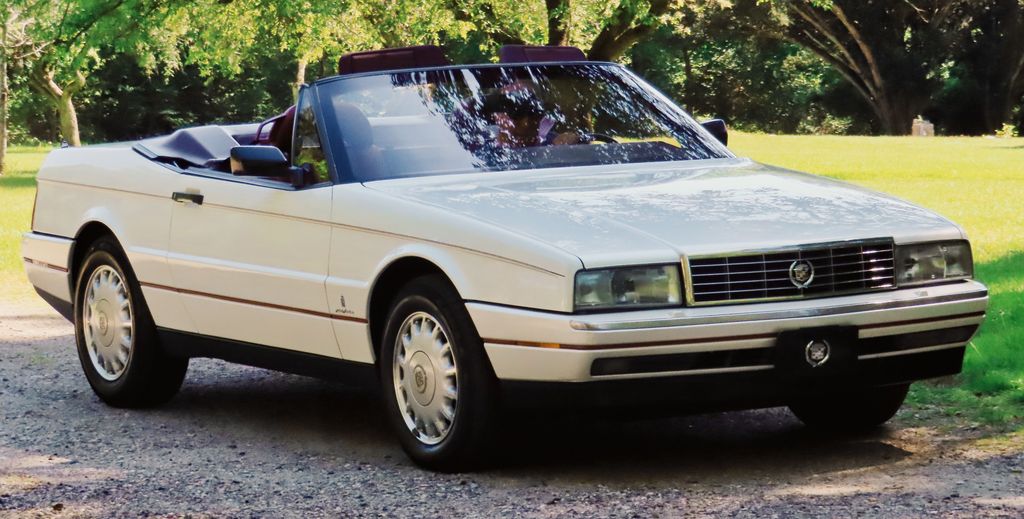
14. **Cadillac Allanté**The Cadillac Allanté stands as a compelling, yet ultimately flawed, testament to Cadillac’s ambitious pursuit of European-level luxury and performance. Introduced in 1987, this distinctive two-seater roadster was the product of an extraordinary international collaboration: Pininfarina in Italy was tasked with designing and constructing the bodies, which were then famously flown across the Atlantic via specially adapted Boeing 747s to Detroit for final assembly with Cadillac chassis and powertrains. This intricate “Cadillac Air Bridge” underscored its ultra-premium aspirations, but the resulting vehicle often struggled to live up to its complex origins and formidable price tag.
One of the Allanté’s most significant drawbacks was its “lack of performance to match its price tag.” Despite its sleek Italian styling and a prestigious badge, the Allanté’s front-wheel-drive platform and its initial 4.1-liter V8 engine, while offering smooth power delivery, simply could not provide the exhilarating driving dynamics or outright speed found in contemporary competitors like the Mercedes-Benz SL or Jaguar XJS, often available at a comparable or even lower cost. This palpable performance deficit meant that buyers paying a premium price often felt short-changed in the crucial driving experience department.
As a classic car today, the Allanté “has aged without charm or value,” evolving into “more curiosity than collectible.” Its unique and complex “manufacturing complexities,” blending European bodywork with American mechanicals, frequently translate into difficult and expensive parts sourcing and repairs, further eroding its appeal as a restoration candidate. Unlike some flawed classics that unexpectedly gain a cult following or appreciate significantly due to their eccentricities, the Allanté generally fails to spark substantial collector interest. For those considering its restoration, the Allanté predominantly serves as a reminder of an interesting, but ultimately unsuccessful, automotive experiment, rarely offering a worthwhile return on the substantial investment required to bring it back to its original, yet still underwhelming, glory.
Read more about: Beyond the Encore: 14 One-Hit Wonder Cars That Burned Brightly, Then Vanished Without a Successor
Embarking on a classic car restoration journey is a deeply personal and often romantic endeavor, frequently fueled by passion, nostalgia, and a profound reverence for automotive history. However, as we’ve meticulously explored with these fourteen distinct examples, not every vintage beauty is destined to become a cherished, value-appreciating showpiece. Some, despite their initial visual allure or historical context, inevitably transform into financial quagmires, demanding far more from their dedicated owners in terms of time, money, and sheer perseverance than they ever return in enduring joy or market value. The crucial lesson for any aspiring restorer, whether a seasoned veteran or a wide-eyed newcomer, is to always temper your dreams with a healthy dose of pragmatism and rigorous research. Diligently assess not just the car’s initial purchase price or aesthetic charm, but its long-term viability, the genuine availability and cost of parts, its potential for market appreciation, and its intrinsic reliability. Sometimes, the most genuinely rewarding projects are not the most glamorous or the most expensive, but rather those that offer a clear and manageable path from the restoration bay to the open road, making the entire journey as fulfilling as the final destination. Choose your next project wisely, and may your garage dreams be filled with satisfying triumphs, rather than regrettable money pits.


